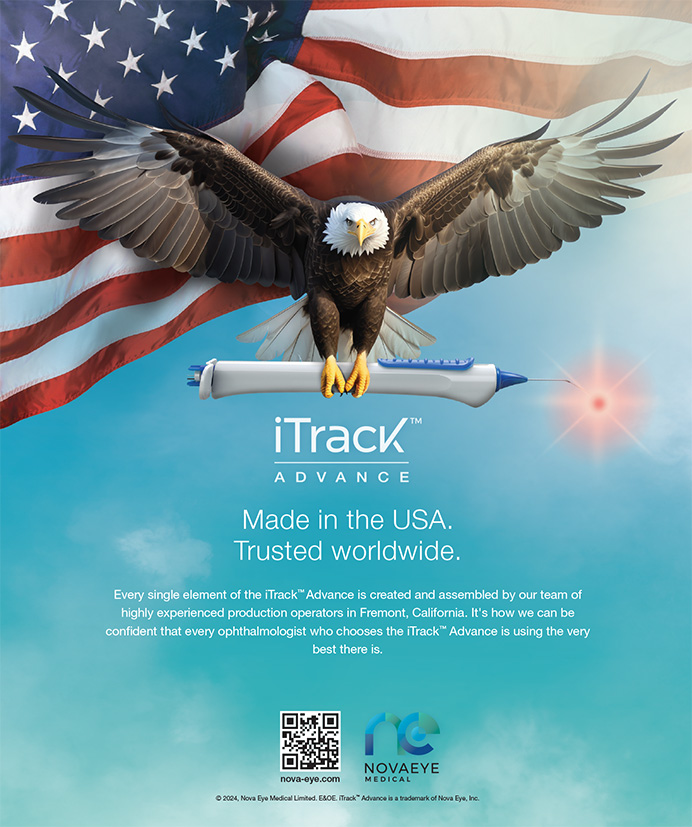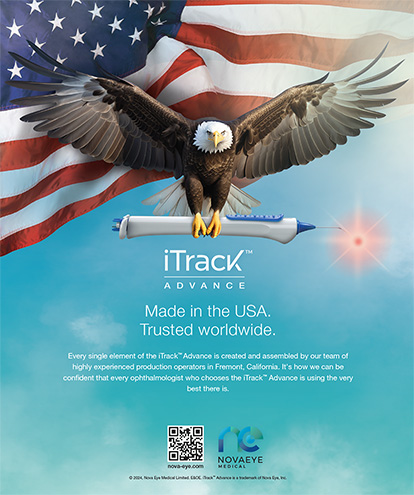
CRST: You gave the Dulaney lecture on IOL power calculations recently during the AECOS Winter Symposium. First off, how good are surgeons at accurately calculating IOL power?
Douglas D. Koch, MD: The data I shared during the lecture are largely from Warren E. Hill, MD, and suggest that many surgeons achieve ±0.50 D of the intended refraction in well under 80% of cases. These data are a few years old. I think that most surgeons are doing a little better now in part because they are more attentive to optimizing the corneal surface preoperatively. Additionally, IOL formulas and biometers have gotten better. As a result, more surgeons are hitting ±0.50 D about 80% of the time, and those who are super attentive can hit 90%. I just looked at my data, and I’m at 90% within ±0.50 D for all cases excluding those with a history of refractive surgery.
CRST: What are some of the common sources of error hampering more accurate IOL power calculations?
Dr. Koch: The two biggest sources of error are the prediction of the effective lens position (ELP) and the measurement of the cornea. The difficulty with corneal measurements is that there is inherent variability among devices, even if the cornea is healthy. ELP remains the biggest quandary because it’s based on several anatomic measurements that are used to calculate where the IOL will sit in the eye. Even if you get the ELP right, it can change as the eye heals in the first few weeks after surgery. We have yet to solve this problem. ELP becomes a bigger issue in short eyes because there is a lot of anatomic variability in several parameters, including corneal diameters, anterior chamber depth, and lens thickness. These eyes require a high-powered IOL, and a small displacement of the IOL from its predicted position can cause 1.00 D or more of inaccuracy.
One approach to overcoming the challenges with calculating ELP is to use big data and AI. A good example is the Hill-RBF Calculator, which uses the eye’s anatomic parameters to predict the IOL power.
Work has also been done to improve the accuracy of ELP predictions with OCT measurements either pre- or intraoperatively. Studies have shown that OCT can improve the accuracy of the ELP prediction,1-3 but no study to date has shown that it actually translates to better accuracy of the IOL calculation.
CRST: In addition to OCT, what other technologies are available that can be useful for helping to predict IOL power?
Dr. Koch: High-frequency ultrasound can be used to measure the anatomy of the crystalline lens. This can be helpful because OCT cannot image the lens through the iris, making it impossible to capture the lens equator. It’s not clear, however, if the use of high-frequency ultrasound will improve the accuracy of our calculations.
CRST: Given the technology available now, what formulas seem to provide the most accurate results? That was another part of your AECOS Winter lecture.
Dr. Koch: There is a long list of great formulas now, including the Barrett Universal II, Emmetropia Verifying Optical (EVO), Hill-RBF, Holladay II, Olsen, Hoffer QST (Savini/Taroni), Kane, and Cooke K6. A new formula is coming out from Carl Zeiss Meditec, the Zeiss AI Calculator. Whether any of these offers unique advantages over the others—even some of the older formulas—in a normal eye is unlikely. The new formulas, however, can be beneficial in challenging eyes, such as long and short eyes and eyes with keratoconus or a history of refractive surgery (eg, LASIK and radial keratotomy [RK]). We recently published a case series showing that Carl Zeiss Meditec’s AI formula improved outcomes in short eyes (< 22 mm), but the percentage of eyes within ±0.50 D of target was still below 75%.4
CRST: Let’s talk a little bit about these eyes. What challenges do clinicians face when selecting an appropriate IOL power for post-LASIK and post-RK patients and those with keratoconus?
Dr. Koch: The sources of error that I mentioned previously—ELP and corneal power measurement—affect measurements for all three of these patient types. Then there is a third one, the accuracy of refraction, which is used to determine A-constants and validate our outcomes. All three of these problems are magnified in patients with complex corneas because the anterior corneal curvature is much more variable. A broader sampling of the anterior corneal surface is needed, and even that has not helped as much as we had hoped.
The posterior cornea is hard to predict from the anterior cornea, and I’m not convinced that we’re doing a great job of measuring the posterior cornea. Predicting the ELP is complicated because most formulas use corneal power as part of the ELP calculation. If the corneal power is modified, then the formula may produce an incorrect ELP prediction. Additionally, the refraction is more variable in keratoconic, post-LASIK, and post-RK eyes because of the multifocality of these corneas.
For post-LASIK eyes, some formulas such as the Barrett True-K No History and the EVO formula for post-LASIK eyes have been designed specifically for such scenarios. The ASCRS online calculator is also great to come up with an average among several formulas. None of the postrefractive IOL formulas, however, has an accuracy as high as the accuracy we can achieve in normal eyes. If you look at the outcomes for post-LASIK eyes, for example, the accuracy is not above 75% within ±0.50 D in almost any study. So, despite all the hard work we put into IOL calculations, we’re still well below our expectation for hitting the intended refraction. In post-RK eyes, the accuracy is even worse—if we hit 60%, we’re probably doing pretty well.
Finally, for keratoconus, new formulas such as the Kane Keratoconus and the Barrett Keratoconus have generated some improvements. Our study showed that, for eyes with a keratometry reading below 50.00 D, there was about 70% to 73% accuracy within ±0.50 D of target, but for a keratometry reading greater than 50.00 D, none of the formulas provided accuracy of greater than 20% within ±0.50 D.5
CRST: Going back to normal eyes, you mentioned that your accuracy at ±0.50 D is around 90%. Do you think that getting about 90% of cases within ±0.50 D is routinely achievable for most surgeons?
Dr. Koch: If real attention is paid to the cornea, yes. For me, attention to the cornea consists of two things. First, I make sure that the ocular surface is optimized for treatment. At the initial consultation, the anterior cornea is measured with the Galilei (Ziemer) to assess the corneal thickness and make sure the patient is not at risk for ectasia or has other tomographic abnormalities. Additionally, patients are asked to purchase preservative-free artificial tears, a mask for warm compresses, and lid scrubs and to use them for 2 weeks before their preoperative visit. Second, at the preoperative visit, the anterior corneal surface is measured with two different biometers such as the IOLMaster 700 (Carl Zeiss Meditec) and Lenstar LS 900 (Haag-Streit). Not everyone has more than one biometer. In this situation, I recommend using some kind of topographer—preferably with a Placido disc—to look at the anterior surface. The biometry readings are repeated so there are at least two and maybe three different measurements of corneal power to compare. If the measurements line up well, there is a good chance you will approach 90% of eyes within ±0.50 D of accuracy with one of the most contemporary IOL power formulas.
The last part of the picture is that 90% accuracy is probably our ceiling. Patients must be informed that they have a one-in-10 chance of having a residual refractive error.
I want to point out the role in my practice for a lens that can be adjusted postoperatively such as the Light Adjustable Lens (LAL; RxSight). The LAL can be beneficial for normal eyes, but the real potential for the technology, and when I’ve enjoyed it the most, is with complicated eyes. I use the LAL often for post-LASIK eyes and have been gratified by the accuracy. Despite all the work being done on IOL calculations, ultimately, I see great potential for IOLs that allow us to make postoperative adjustments. I also think there is a nice role for the small-aperture effect of the IC-8 Apthera (Bausch + Lomb) because it can help increase accuracy, minimize the irregularity issues that are common in diseased corneas, and give patients a better quality of vision.
1. Martinez-Enriquez E, Pérez-Merino P, Marcos S. Estimation of intraocular lens position from full crystalline lens geometry: towards a new generation of intraocular lens power calculation formulas. Sci Rep. 2018;8(10):9829.
2. Hirnschall N, Varsits R, Doeller B, et al. Intraoperative optical coherence tomography measurements of aphakic eyes to predict postoperative position of 2 intraocular lens designs. J Cataract Refract Surg. 2018;44(12):1310-1316.
3. Yoo S, Na K, Lee HK, et al. Diagnostic performance of three-dimensional endothelium/Descemet membrane complex thickness maps in active corneal graft rejection. Am J Ophthalmol. 2019;198:17-24.
4. Kenny PI, Kozhaya K, Truong P, et al. Efficacy of segmented axial length and AI approaches to IOL power calculation in short eyes. J Cataract Refract Surg. Published online March 17, 2023.
5. Kozhaya K, Chen A, Joshi M, et al. Comparison of keratoconus specific to standard IOL formulas in keratoconus patients undergoing cataract surgery. J Refract Surg. [In press.]




